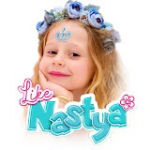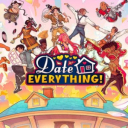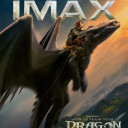Frozen
When I first heard about Frozen, my initial thoughts were clouded by skepticism. How could yet another Disney princess story differentiate itself from its predecessors? However, the buzz around it was too hard to ignore. Despite my reservations, I decided to watch it, hoping to uncover the charm that made it a cultural phenomenon.
The first surprise came in the form of the film's sheer visual elegance. Set against a Scandinavian backdrop, Frozen provides an irresistible blend of vibrant colors and stunning animation that immediately drew me in. This was no ordinary fairy tale — it promised depth, emotional resonance, and, perhaps most importantly, innovation.
The Allure of Nostalgia
Frozen expertly balances the nostalgic appeal of traditional Disney movies with the need for something fresh and modern. Two princesses, Anna and Elsa, form the nucleus of the story, somewhat mirroring archetypes from past tales yet distinct in their own ways. The traditional themes of love and redemption are still present, but there is an added complexity.
While the nostalgic elements resonate with fans of classics like Beauty and the Beast and The Little Mermaid, it's Elsa's unique narrative that modernizes the tale. Her journey of self-discovery and acceptance, seen through her magical powers and their repercussions, remains a central focal point of intrigue and modern sensibility.
History: A Look Back
It's enlightening to examine how Frozen came into being. The movie drew inspiration from Hans Christian Andersen's "The Snow Queen," yet underwent significant transformations. The screenplay, penned by Jennifer Lee, who also co-directed, took liberties to infuse contemporary relevance, turning the movie into more than just an adaptation.
Disney initially struggled in conceptualizing a story from "The Snow Queen" that would align with modern audiences until they reached the decision to focus on sisterhood and self-empowerment. Understanding this creative journey offers insight into the film’s layered depth and its appeal across generations.
Why It’s Interesting
One might wonder why a movie about two sisters and an endless winter has captured the imagination of millions. A significant factor lies in its themes, which break from Disney's typical formula of romance and the requisite 'happily ever after' with a partner. Frozen prioritizes familial love and personal growth, including Anna and Elsa’s sometimes strained relationship.
Another fascinating aspect is how the film becomes a dialogue on self-identity and societal acceptance. Elsa's struggle with her powers reflects modern discussions about embracing one's true self against external expectations. This timeless message, captured through song and story, sets Frozen apart and elevates it to a narrative of empowerment.
Visual and Musical Brilliance
The film is an auditory and visual spectacle—the animation is nothing short of breathtaking, with scenes like Elsa’s majestic ice palace exemplifying the technological prowess of contemporary animation. The film’s ability to make ice and snow appear so alive and dynamic adds layers of realism and fantasy alike.
Musically, Frozen scores a tour de force with its chart-topping soundtrack. Songs like "Let It Go" not only define the movie but also create pivotal moments that resonate emotionally with viewers. The blend of Broadway-esque numbers with cinematic flair showcases the talents of Robert Lopez and Kristen Anderson-Lopez, who hold the film’s melodic narrative together.
Character Dynamics
The dynamic between Anna and Elsa captures the essence of sibling relationships—love, rivalry, and reconciliation. Anna's optimism and naivete counterbalance Elsa's reticence and fear, creating a compelling dichotomy that drives the narrative forward.
The characters, notably Olaf and Kristoff, serve not merely as comic relief but as integral parts of the storytelling. Olaf’s whimsical innocence and Kristoff’s understated heroism complement the sisters' journey and contribute to the film's layered storytelling.
A Break from Tradition
While traditional Disney movies often focus on romantic love as the solution to all problems, Frozen shatters this convention by positioning sisterly love as the ultimate resolution, a refreshing deviation from the norm. This shift redefines what a 'true love's kiss’ can mean and broadens the scope of meaningful relationships portrayed.
Anna's acts of courage and determination to save her sister redefine the classic 'princess saving' motif, casting her more as a heroine in her own right rather than a damsel in distress—a welcome innovation in Disney's portrayal of female protagonists.
The Thematic Undercurrents
Beyond the visual and musical elements, Frozen presents nuanced undercurrents of fear, acceptance, and freedom. Elsa’s journey represents the internal struggle many face with identity and the fear of societal rejection. Her transformation from a repressive figure into a liberated queen serves as a powerful metaphor for personal acceptance.
Anna’s unwavering belief in her sister despite adversity underscores the theme of hope and redemption. The interplay of these thematic elements brings a profundity to the narrative, turning it into more than just an animated film—it becomes a narrative that engages with real-world emotions and dilemmas.
Humor and Levity
The film does not shy away from humor, particularly through the character of Olaf. This lovable snowman delivers innocence and levity amidst the more serious undertones, ensuring that the film remains accessible and entertaining for younger audiences.
Kristoff and his reindeer Sven also provide lighter moments, with their bond serving as a source of comedic warmth. These carefully interspersed moments of humor brighten the storyline while adding to character development.
Impressions: An Emotional Rollercoaster
Upon first viewing, I was struck by Frozen's ability to make me reflect on my own relationships and emotions. The powerful combination of narrative, music, and stunning visuals fosters an immersive experience, allowing viewers to connect with the characters and their journeys deeply.
Elsa’s anthem "Let It Go" caught me off guard—not just musically but emotionally. It's a brilliant encapsulation of empowerment, resonating long after the credits roll. I found myself humming the melody days later, a testament to its enduring impact.
The Global Impact
Since its release, Frozen has transcended geographical boundaries, captivating audiences across the globe. Its universal themes of love, identity, and self-acceptance have struck a chord worldwide, evidenced by its immense box office success and lasting cultural footprint.
Frozen's influence can be seen in its various merchandising and the way it has become a staple in popular culture. The film's success has paved the way for discussions around greater diversity and representation within Disney films, challenging the traditional norms.
A Second Viewing: New Discoveries
Watching Frozen a second time offered new insights. Upon revisiting, I was better able to appreciate the subtle musical motifs and the depth of character interactions, which can be easily overlooked on a first watch. Each viewing uncovers layers and complexities that make the film richer.
This second look highlighted how well the film balances various elements—adventure, comedy, and drama—delivering a holistic cinematic experience that caters to diverse audiences. The experience affirmed that Frozen stands as a movie deserving of its acclaim.
The Art of Storytelling
At its heart, Frozen is a masterclass in storytelling. The screenplay's clever subversion of expectations, mixing humor with heartfelt emotion, shows a keen understanding of dynamic narrative. The surprises in plot development keep viewers engaged, offering unpredictability without straying too far from the classic Disney touch.
The film's pace and progression ensure that every moment counts, presenting both spectacle and substance. It's a narrative journey that embraces both the fantastical and the personal, balancing high stakes with deeply relatable themes.
The Lasting Legacy
While some films fade from memory, Frozen has established a lasting legacy. It’s not just remembered for its blockbuster success or iconic songs but for how it reshaped Disney's narrative approach. Empowerment, family, and self-discovery have taken center stage, setting a new standard for animated storytelling.
The echoes of Elsa’s and Anna’s journey can be seen in subsequent Disney offerings, reflecting Frozen's imprint. This ongoing influence underscores the film's importance as more than just a piece of entertainment but a cultural milestone in innovative storytelling.
Conclusion
In conclusion, Frozen transcends its label as a mere animated film, emerging as a narrative that powerfully speaks to themes of identity, love, and empowerment. Its blend of enchanting visuals, captivating music, and profound storytelling culminate in a cinematic masterpiece that continues to resonate with audiences worldwide.
Frozen captivated me, not only through its dazzling aesthetic but through its commitment to delivering a potent message. It's a film to be seen, heard, and felt, opening up dialogues on acceptance and personal growth. Frozen isn't just a Disney movie—it's a celebration of what it means to truly let go and find oneself.
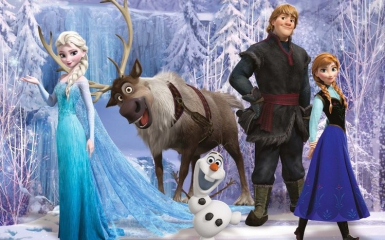
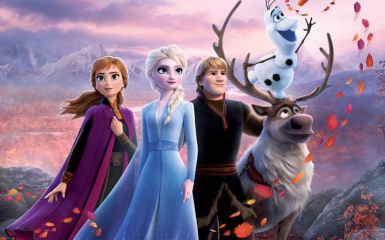
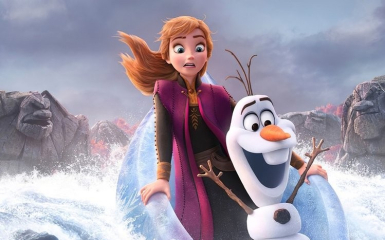
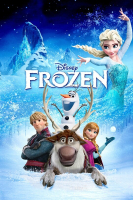
 How to watch
How to watch 





